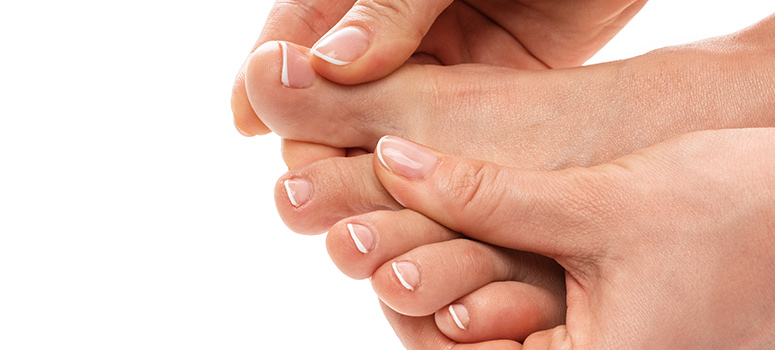Imagine you are trying a new shoe and notice discolouration in your toenail. A big turn-off, right? But more than a turn-off, it signifies that your feet need attention. This change in the appearance of your nail can be caused due to toenail fungal infection. You may feel worried about it as Toenail fungal infection is not something you want to catch; however, learning how to prevent this condition is very easy for anyone.
So, we have collated some information on the causes and prevention of Toenail infection that’ll help you tackle this fungal infection better.
What is toenail fungus?
See, it’s not just your fingers and toes that can get infected by fungal infections. Your toenails are susceptible to the same diseases, including toenail fungus.
Toenail fungus or onychomycosis is a fungal infection that affects the toenails. It can affect your nails and toes, causing them to become thick and yellow. The cause of this infection is unknown yet, but it may be caused due to prolonged exposure to damp and moist environments. It is common for people who wear poorly fitting shoes to have problems with sweating. Toenail fungus is often passed from one person to another via contact with infected skin or hair, such as from sharing towels or shoes with someone who has it.
Who is more prone to toenail fungus?
Toenail fungus is more common in people with weak immune systems because the fungus can enter the body through open wounds or skin sores on the feet. This includes people who have diabetes or another disease that weakens their immune system.
This type of Toenail fungus infection is more common among women than men. It can also be hereditary. If your parents or siblings have been suffering from Toenail fungal infection, you are also likely to be affected. Also, people of all ages can get this infection, but the elderly are most commonly affected because they have more skin and nail tissue susceptible to dermatophyte infections.
What are the signs and symptoms?
The first sign of a fungal infection in your nails is when they start growing out of control. You may see white spots on your nails or yellowish discolouration of your nails. These white spots are caused by an overgrowth of bacteria in the nail bed that causes inflammation and pain at the base of your nail.
The symptoms of this condition vary depending on the severity of the infection. If no infection is present, you may experience mild redness around your nails, which will disappear within 2-3 weeks after starting treatment. In severe cases, you may experience pain or a burning sensation in your toes.
What are the causes of Toenail Fungus?
Toenail fungal infection is caused by microscopic organisms called dermophytes which do not require sunlight to survive. Hence, these fungi thrive in damp and moist environments. Besides dermophytes, some yeasts and moulds are also believed to cause toenail fungal infections.
These pathogens often enter the skin through cuts or minor wounds between the nail and nail bed. They later grow and cause discomfort when they get a warm and moist environment to thrive.
What are the Treatments for Toenail Fungus?
Toenail infections are entirely treatable. Based on the severity of your case, a dermatologist can suggest the following treatment types:
-
- Oral anti-fungal medication
Your dermatologist may prescribe you some oral antifungal medication. This type of treatment does not suit everyone as these medications can affect your liver and interact with other medicines you are already taking. He may also ask you to get some blood tests done to check for side effects of that medication.
-
- Topical medication
Topical medications are the most effective treatment for toenail fungus and are even better when paired with oral medications. It takes time to treat the infections, but it is the easiest and most cost-effective way of treatment.
-
- Laser treatment
In this type of treatment, a dermatologist will use a laser beam and special lights to treat the infected area of your toenail. This treatment is not as effective as topical or oral antifungal medications. Hence, it is not used as the first step of the treatment for toenail fungus.
What to see a doctor?
If you notice symptoms such as swelling around your nail, redness or irritation around your nails (such as tenderness when you press on them), or thickening and discolouration of your nails (this could lead to yellowing), see a doctor right away! These could be signs of something more serious.
Furthermore, the fungus can be treated with over-the-counter medications if you have mild cases. However, if you have severe cases of toenail fungus or it’s causing other health problems, you should see a doctor for treatment.
Deal with Toenail fungus the right way!
The toenail is not painful but can be challenging to treat. It can make you feel conscious about how your foot looks. It is more important to consult a dermatologist than to try out home remedies or OTC products without a prescription. An expert is better equipped to suggest you a treatment course. Connect with expert dermatologists near you through Skin and Hair Academy for hair and skin care tips and get the right treatment for your dermatological concerns.














